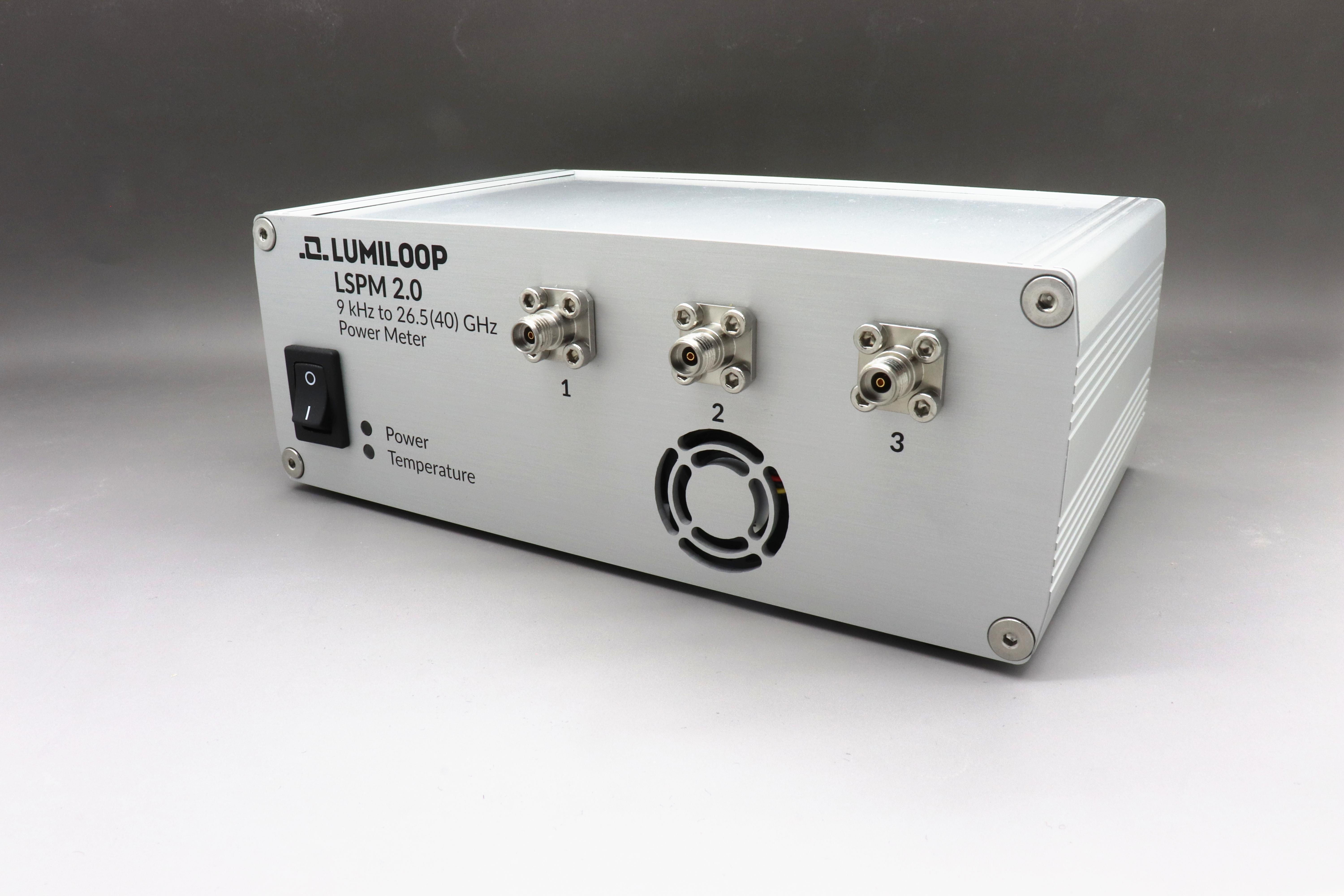This article focuses on Lumiloop’s LSPM 1.0 and LSPM 2.0 – triple channel high speed RF power meters.
Learn about 11 advantages of using Lumiloop’s high speed, high precision and high dynamic measurement devices.
#1 Fits your needs: 2 models, 1 to ∞ channels
The LSPM 1.0 covers a frequency range from 9 kHz to 6 GHz.
The LSPM 2.0 covers a frequency rance from 9 kHz to 26.5 GHz.
Both power meters are available with 3, 2 or 1 channel. Multiple LSPM devices can be hardware synchronized to create measurement systems with virtually unlimited number of power meter channels. The synchronization can be extended to LSProbe systems.
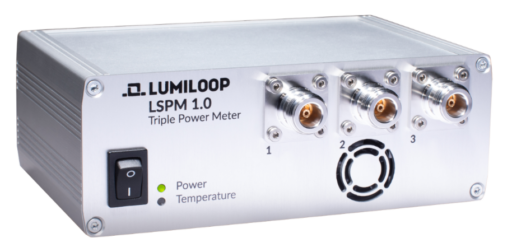
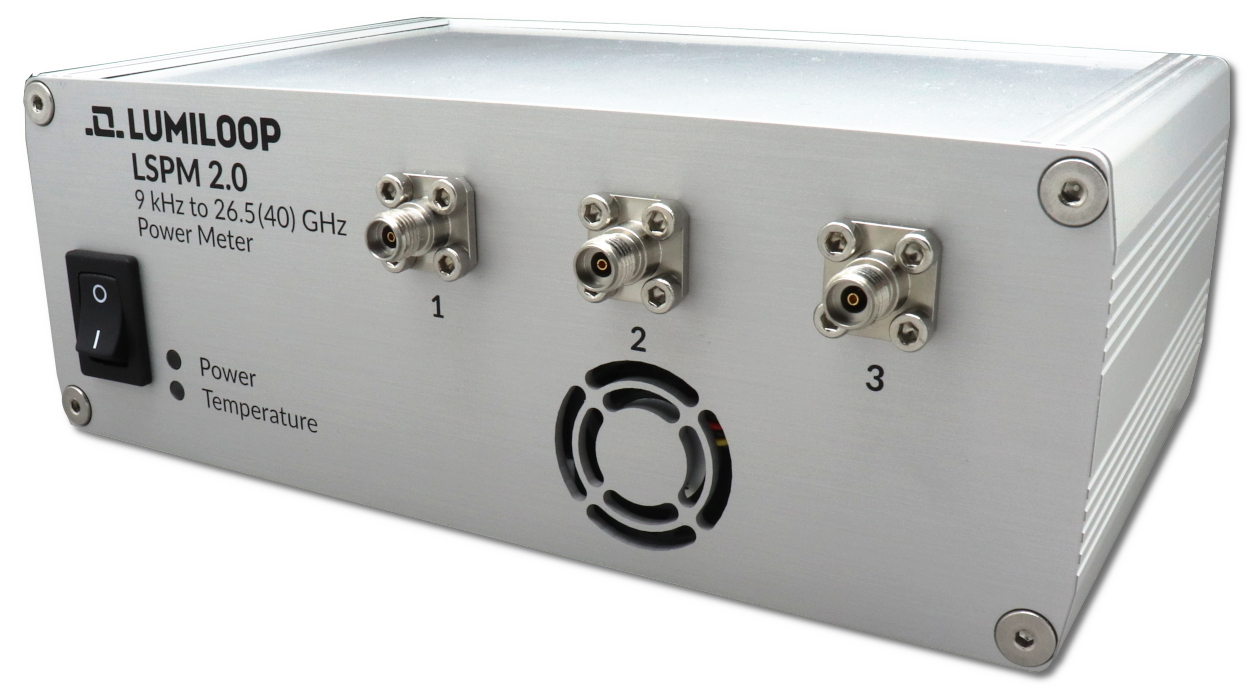
#2 Flexible: Connection Rearwards
Both, the LSPM 1.0 and the LSPM 2.0 model, are also available with rearward connectors. This helps for a better fit and integration in your 19″ rack.
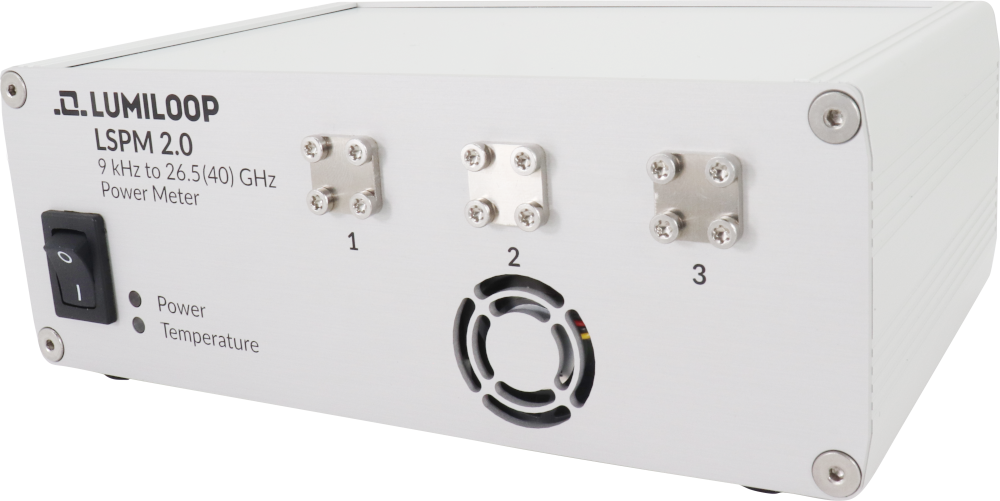
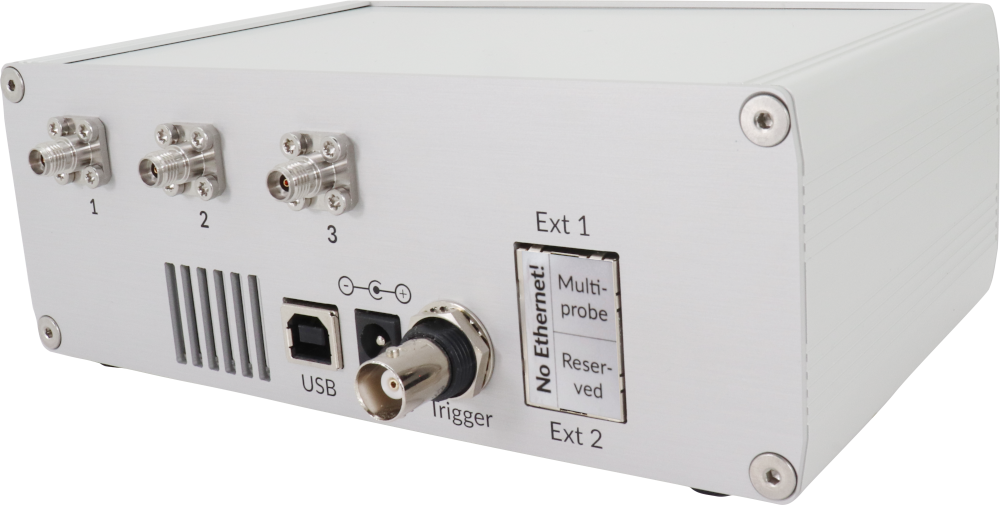
#3 19″ Rack Integration
The LSPM 1.0 / LSPM 2.0 Power Meters can be used as stand-alone device or integrated in a 19″ rack via front plates. This flexibility allows for the optimum fit to your measurement needs and lab space available.


#4 Power Meter Calibration
The LSPM 1.0 / LSPM 2.0 Power Meters use manufacturer calibration data as well as optional external accredited calibration for obtaining accurate power values. Lumiloop offers the all-round carefree service of accredited calibration acc. to ISO 17025. This includes checking your measuring equipment and handling the accredited calibration. Click here to learn more.
#5 Third Party and In-House Software Integration
The LSPM 1.0 / LSPM 2.0 Power Meters are integrated in many third party EMC test automation software. In-house EMC software can easily talk to the devices via well-documented SCPI commands. This makes the integration into your lab surroundings as easy as pie!
#6 Continuous and Pulsed RF Power Measurements
The high-speed Power Meters LSPM 1.0 / LSPM 2.0 enable continuous RF power measurements with high resolution, high speed and low noise. The high speed gains higher accuracy by averaging.
LSPM 1.0/ LSPM 2.0 are not limited to the acquisition of quasi-static power levels. With the sampling rate of 2 MSamples/s, Lumiloop’s Power Meters are able to measure rapidly changing RF signals. The LSPM’s large dynamic range and fast pulse response make it ideally suited for the analysis of pulsed signals and sweep measurements.
#7 Triggered Power Measurements
Triggered power measurements allow the user to take full advantage of the LSPM’s exceptionally high-speed measurements. Waveform acquisition can be triggered by software, by hardware (BNC trigger input) or a channel’s power level with a set threshold. The trigger system has a built-in dead-time of 100 μs, i.e., it can process up to 10,000 events per second.
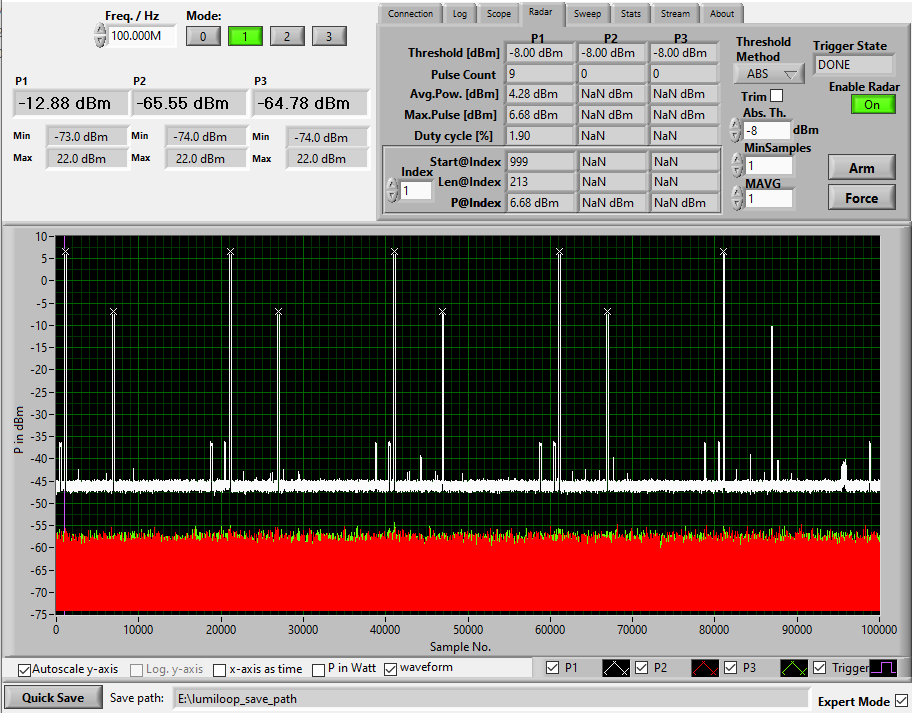
#8 Sweep Measurements
The LSPM 1.0 / LSPM 2.0 Power Meters support the evaluation of a power waveform containing a level or frequency sweep, thus enabling sped-up measurements. For sweep measurements the acquired waveform typically contains multiple sections of equal size, where each section is characterized by constant measurement conditions. Most commonly, the frequency setting of a setup is altered in a step-wise manner in order to measure the frequency-dependent power of a setup under test. In this case, each section of the power waveform will have a different, constant frequency associated with it. Sweep measurements return the averaged power value for each section of the waveform. Dead-times at the beginning and end of each section may be applied to account for the setting characteristics of the setup under test. Due to the 2 MSample/s sampling rate of the LSPM Power Meters, waveform sections may be shorter than a millisecond, enabling the evaluation of more than a thousand distinct frequencies per second. This method is much faster than setting the frequencies individually and measuring power values via multiple discrete queries.
#9 Power Statistics
Two types of power statistics are available for LUMILOOP LSPM 1.0 / LSPM 2.0 Power Meters: continuous statistics and triggered statistics based on acquired waveforms. Continuous statistics evaluate all measured power values from the time that statistics collection is enabled to the time that a statistics snapshot is created. Continuous statistics are collected in the background and can be performed over arbitrary periods of time. Triggered statistics evaluate only power values of waveforms in memory. All SCPI commands of the statistics subsystem are available for both continuous and triggered collected and triggered power values.
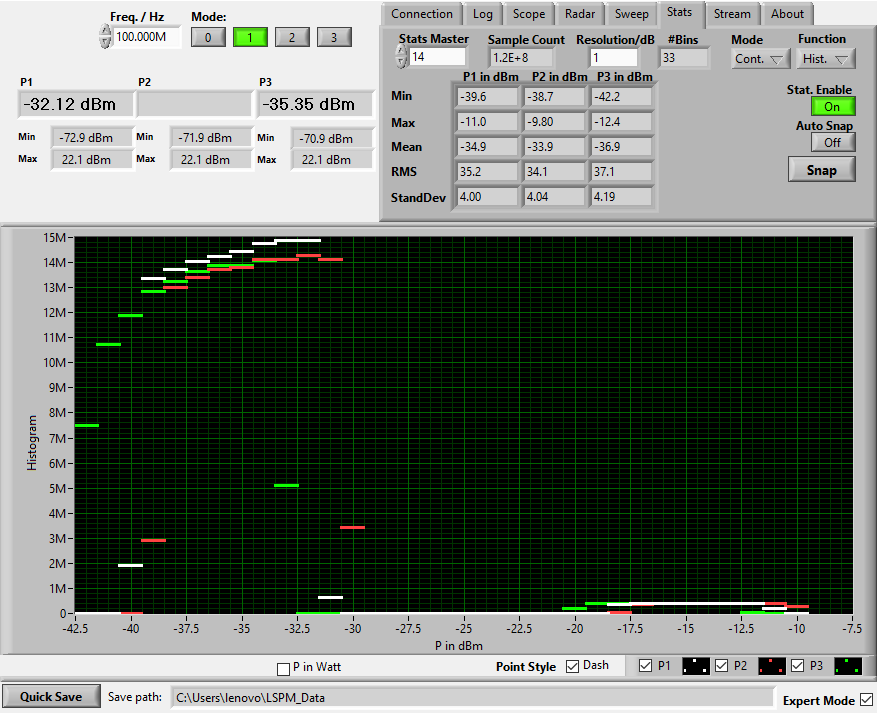
#10 Stream Recording
The LSPM Power Meters support recording data at the power meter’s full sampling rate for virtually unlimited durations of time. The recording time is only limited by the disk space available.
#11 Virtual Power Meters
The LSPM TCP Server is capable of instantiating virtual power meters including the simulation of arbitrary power patterns. Virtual power meters can replace physical meters and signal generators during measurement setup, feature demonstration, third party EMC software development and off-line signal analysis, including setups using multiple power meters.
Virtual power meters support all operating modes. Triggering is supported with the exception of external trigger input and output. Virtual power meters support the collection of continuous statistics.
Learn more:
